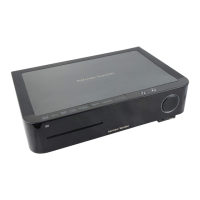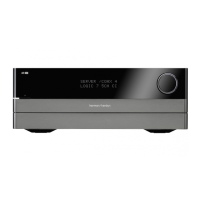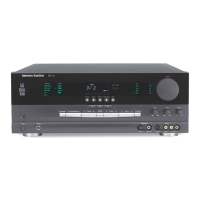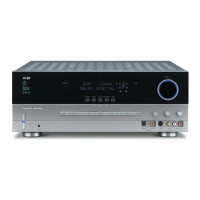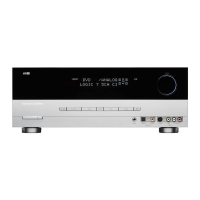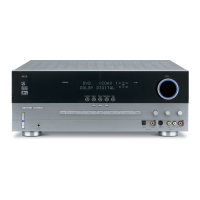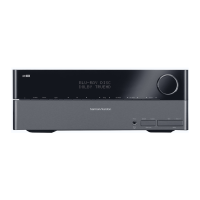
Do you have a question about the Harman Kardon BDS 275 and is the answer not in the manual?
| Number of channels | 5.1 |
|---|---|
| HDMI inputs | 3 |
| HDMI outputs | 1 |
| Component video inputs | 1 |
| Analog audio inputs | 2 |
| Blu-ray Player | Yes |
| 3D Blu-ray Playback | Yes |
| 4K Upscaling | No |
| USB Port | 1 |
| Wi-Fi | No |
| Bluetooth | No |
| Apple AirPlay | No |
| DLNA Certified | No |
| Digital audio inputs | 1 Optical, 1 Coaxial |
| Type | Blu-ray Home Theater System |
Check voltage compatibility to prevent damage and safety hazards.
Save carton and packing materials for future shipping or storage needs.
Place unit on a firm, level surface with adequate ventilation and avoid extreme conditions.
Toggles power and adjusts volume; may auto-enter standby mode.
Connect satellite and center speakers using speaker wires.
Connects to home network for streaming content and DLNA devices.
Connects to TV's HDMI input; transmits video and audio.
Connect up to three additional source devices with HDMI connectors.
Toggles receiver between On and Standby modes; auto-standby after inactivity.
Connect speakers to the receiver using color-coded terminals for correct channels.
Use HDMI cable to connect receiver's HDMI output to TV's HDMI input.
Use network cable to connect receiver to home network router or jack.
Use HDMI cables for best video and audio quality; no extra audio connections needed.
Program remote to control auxiliary components via setup codes or learning.
Configure TV resolution, aspect ratio, and speaker package for optimal performance.
Perform automatic speaker calibration; check for test failure and retry if necessary.
Access and adjust various receiver functions like System, Language, and Network.
Configure tone controls, audio output, and speaker settings for optimal sound.
Manually configure speaker system, adjust levels, and set distances for each speaker.
Automatically detects speaker capabilities and optimizes performance using a microphone.
Set up network features like connection test and IP settings.
Configure TV aspect ratio, resolution, color space, and HDMI deep color.
Adjust the volume levels of individual speakers while listening to music.
Decodes and plays audio formats; switch between surround-sound modes.
Load discs horizontally into the slot and press Play to begin playback.
Access media on network devices via DLNA and enjoy online services like Pandora and YouTube.
Configure PC media sharing for access via DLNA; receiver supports MP3 and WMA.
Stream audio wirelessly from paired Bluetooth devices; select Bluetooth as active source.
Connect iOS devices via USB; use remote buttons to control playback functions.
Stream audio wirelessly via AirPlay from Apple devices to the BDS receiver.
Select USB or CD/DVD data disc; browse folders for Photo, Music, Video, AVCHD media.
Play MP3 files from USB/CD; displays file info and album art; controls playback.
Create custom playlists for files on USB devices/discs and play them sequentially.
Solutions for receiver not powering up or sound issues without TV picture.
Addresses hum in sound, streaming service access, DLNA, and disc playback issues.
Troubleshoots remote control commands, component control, and erratic receiver behavior.
Details continuous and multichannel power, input sensitivity, S/N ratio, and frequency response.
Lists supported formats, region codes, audio formats, video system, and signal characteristics.

